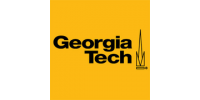- From www.udacity.com
Machine Learning: Unsupervised Learning

- Self-paced
- Free Access
- 4 Sequences
- Introductive Level
Course details
Syllabus
Lesson 1: Randomized optimization
- Optimization, randomized- Hill climbing- Random restart hill climbing- Simulated annealing- Annealing algorithm- Properties of simulated annealing- Genetic algorithms- GA skeleton- Crossover example- What have we learned- MIMIC- MIMIC: A probability model- MIMIC: Pseudo code- MIMIC: Estimating distributions- Finding dependency trees- Probability distributionLesson 2: Clustering
- Clustering and expectation maximization- Basic clustering problem- Single linkage clustering (SLC)- Running time of SLC- Issues with SLC- K-means clustering- K-means in Euclidean space- K-means as optimization- Soft clustering- Maximum likelihood Gaussian- Expectation Maximization (EM)- Impossibility theoremLesson 3: Feature Selection
- Algorithms- Filtering and Wrapping- Speed- Searching- Relevance- Relevance vs. UsefulnessLesson 4: Feature Transformation
- Feature Transformation- Words like Tesla- Principal Components Analysis- Independent Components Analysis- Cocktail Party Problem- Matrix- AlternativesLesson 5: Information Theory
- History-Sending a Message- Expected size of the message- Information between two variables- Mutual information- Two Independent Coins- Two Dependent Coins- Kullback Leibler Divergence###Unsupervised Learning ProjectPrerequisite
Instructors
- Charles Isbell - Charles Isbell is a Professor and Senior Associate Dean at the School of Interactive Computing at Georgia Tech. His research passion is artificial intelligence, particularly on building autonomous agents that must live and interact with large numbers of other intelligent agents, some of whom may be human. Lately, he has turned his energies toward adaptive modeling, especially activity discovery (as distinct from activity recognition), scalable coordination, and development environments that support the rapid prototyping of adaptive agents. He is developing adaptive programming languages, and trying to understand what it means to bring machine learning tools to non-expert authors, designers and developers. He sometimes interacts with the physical world through racquetball, weight-lifting and Ultimate Frisbee.
- Michael Littman - Michael Littman is a Professor of Computer Science at Brown University. He also teaches Udacity’s Algorithms course (CS215) on crunching social networks. Prior to joining Brown in 2012, he led the Rutgers Laboratory for Real-Life Reinforcement Learning (RL3) at Rutgers, where he served as the Computer Science Department Chair from 2009-2012. He is a Fellow of the Association for the Advancement of Artificial Intelligence (AAAI), served as program chair for AAAI's 2013 conference and the International Conference on Machine Learning in 2009, and received university-level teaching awards at both Duke and Rutgers. Charles Isbell taught him about racquetball, weight-lifting and Ultimate Frisbee, but he's not that great at any of them. He's pretty good at singing and juggling, though.
Editor
The Georgia Institute of Technology, also known as Georgia Tech or GT, is a co-educational public research university located in Atlanta, Georgia, USA. It is part of the wider University System of Georgia network. Georgia Tech has offices in Savannah (Georgia, USA), Metz (France), Athlone (Ireland), Shanghai (China), and Singapore.
Georgia Tech's reputation is built on its engineering and computer science programmes, which are among the best in the world5,6. The range of courses on offer is complemented by programmes in the sciences, architecture, humanities and management.

Platform
Udacity is a for-profit educational organization founded by Sebastian Thrun, David Stavens, and Mike Sokolsky offering massive open online courses (MOOCs). According to Thrun, the origin of the name Udacity comes from the company's desire to be "audacious for you, the student". While it originally focused on offering university-style courses, it now focuses more on vocational courses for professionals.

